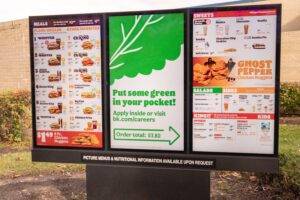
Take a cursory glance online and you’ll be inundated with assertions that marketers need to move faster, be more agile and respond to technological changes at breakneck speed. If you don’t, you’ll fail to keep up with shifting demands of the market and your competitors. The pressure is on!
Feeding into this mania for speed are ad platforms like Google and Meta, who, while offering a cost-effective way for businesses of all sizes to market themselves, also encourage a quantity over quality approach to advertising. They make it easy to spend money with them. Quickly. For obvious reasons.
My question today is whether in this frenzy, are we missing something fundamentally important? Does all this push for speed leave our business’ less effective as a result?
Perhaps we marketers today can learn a trick or two from the Slow Food revolution, a movement founded in rural Northern Italy as a response to overproduction and the poor nutritional quality of fast-food chains. A movement challenging quantity with a manifesto for quality. We are what we eat, they advocate.
Value over volume in marketing
The slow food philosophy values food prepared with care and consideration that fosters a sense of deep appreciation in diners. It sees that the food itself is truly significant and that time invested in the best ingredients, the most careful preparation and the time taken to enjoy all combine to create a wholly “better” experience. To some extent this is going back to the way food would have been in the old days. Simple. Authentic.
In a somewhat analogous way, if we look back at “old school” marketing, when execution was only by “slow media” e.g. TV ads that took months to prepare and played for long period, or Magazines where you had weeks before the deadline, and the publications hung around for weeks, or even Direct Mail (remember that?), the marketing process could invest considerable time and attention into getting that marketing wholly “right”. Including plenty of market research and testing.
There wasn’t a second chance. You bet once. So you had to bet right.
Now, all that’s needed is a subscription to Canva and enough budget to run your campaign on Google Ads. And off you go.
Erosion of trust in online advertising
We’re inundated on a daily basis by dozens, if not hundreds, of low-quality banner ads and sponsored social media posts, and for the most part, consumers have learnt to simply tune them out, scroll past without so much as a second glance, or in particularly egregious cases, block an advertiser from their feed altogether. It’s getting harder to get the response we want and need.
Audiences are growing increasingly irritated by online advertisers, with 9 in 10 believing ads are becoming more intrusive, and ruining their online experience.
It gets worse, however. One YouGov survey found that just 1 in 10 Brits trust social media advertising – a mere 10% compared with the 54% that rated TV advertising as trustworthy.
Clearly, marketers need to restore consumer trust in our work through high-quality, relevant ads that prompt viewers to take further action, rather than simply bolstering metrics that don’t translate into meaningful brand interactions and ultimately, sales. One could say this is akin to fast food outlets where more and more people today question the nutritional value and quality of the food they buy.
Ads are not a zero sum game
For one thing, churning out vast quantities of poorly realised ad creatives can and will have a negative impact on your overall brand perception and reputation.
Yes, maybe one outcome is you just get ignored. The downside is just wasted budget. Bad enough in its own right, but there is the real risk that dull ads harm your brand perceptions. Once you are “labelled” cheap and nasty it’s very hard to recover. Even more so in B2B.
Perhaps your customers will remember duff ads and hold them against you (even if without much thought).
And by the way, A/B testing may not help much if you test two poor options against each other!
Is it time for more Slow Marketing?
While we certainly have the ability to do rapid marketing, it would be wiser to take a page from the Slow Food book. Just because we can do something fast, doesn’t necessarily mean we should. Marketing is our connection to our customers, a precious link from our minds to theirs. Not something that should be treated lightly.
I know the immediate sugar rush of high click-through rates are seductive but all too often we can’t easily measure the attitudes and lasting emotion we create. Whether we win long term customers. Many of our clicks could fail to bring any real motivation or interest with them. Which then detracts from the potential to recruit a genuine customer. Or build a better brand reputation and image. Which is the long-term life blood of our business (in our analogy the superb, memorable meal).
Starting the Slow Marketing movement
Whilst I’d love to discuss this with you in a restaurant in rural Piedmont with lunch of fresh truffle infused local pasta, I’ll just say now that creating campaigns that engage and delight rather than irritate or bore customers requires taking the same approach to ads that slow food proponents take to their dishes. Marketers must stop the overproduction of low-quality ads that are flung out by algorithm to “the more the merrier” mass audiences, and instead take the time to craft visuals with charm and intelligence – thoughtful messaging that truly resonates with their target audience.
Or perhaps your competitors will?
Read more:
Not so fast! What marketers can learn from the Slow Food movement






